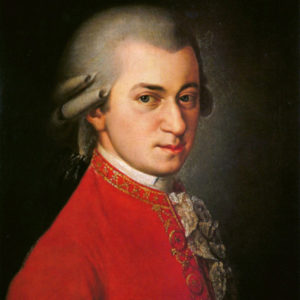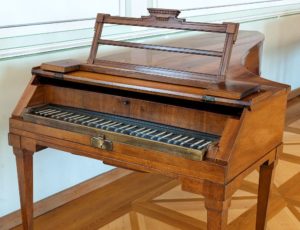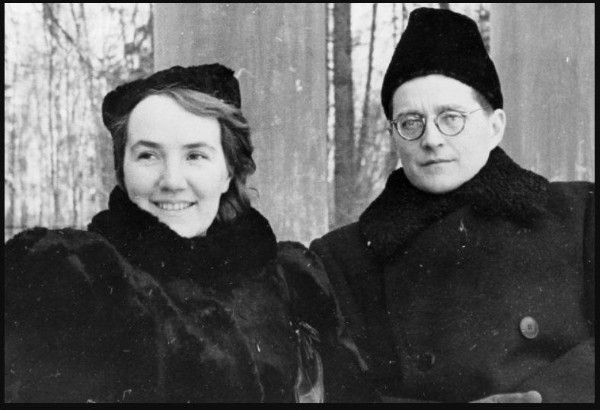“The sonatas of Mozart are unique; they are too easy for children, and too difficult for artists.”
― Artur Schnabel
Artur Schnabel Plays Mozart’s Piano sonata K.333
On the page the piano music of Wolfgang Amadeus Mozart looks simple (but never simplistic) yet for many pianists, the music’s greatest challenge lies in that simplicity. Its beauty, and profundity, is contained in a transparency of texture and expression which challenges the most technically assured and artistically insightful musicians.
Wolfgang Amadeus Mozart: Piano Sonata No. 12 in F Major, K. 332 (Alfred Brendel, piano)
As pianist Alfred Brendel says of Mozart, “everything in his music counts”. He reduces music to its most essential and it demands from the pianist a precision which easily matches the virtuosity required to play Liszt. Arpeggio passages and trills must shine with jeu perlé playing; literally “pearly playing”, a technique which creates fractional separation between rapid notes to bring a glorious pearlescent sheen to the sound – easy to achieve on the lighter instruments Mozart would have known, much harder on a modern piano. His gorgeous melodic lines must sing like the most beautiful, sensual arias from his operas, accompaniments (Alberti bass lines, for example) need the balance of the best string quartet textures, while fioriture and cadenzas call for drama and spontaneity.

Mozart
For many professional pianists, Mozart is regarded as the ultimate challenge. This may seem surprising, given that his piano scores contain far fewer notes than, say, those of Liszt or Ravel. But every one of those notes demands to be sounded and heard perfectly, and this requires an inordinate level of technical mastery to achieve such refinement, coupled with imagination and artistry to breathe colour and life into those deceptively simple scalic runs or ascending arpeggio passages. In the piano music of Schumann or Liszt, Brahms or Rachmaninoff there are thickets of notes which give one some cover; in Mozart there is nowhere to hide.
Wolfgang Amadeus Mozart: Piano Sonata No. 8 in A Minor, K. 310 (Mitsuko Uchida, piano)

Mozart’s piano in his Salzburg birthplace
The beautifully-crafted simplicity of the notes belies unfathomable and infinite complexities, and an extraordinary breadth of expression, which easily equals that other master of musical chiaroscuro, of smiling through tears, Franz Schubert. Dismiss the image of Mozart as the giggling, farting Rococo man-child as portrayed in the play and film ‘Amadeus’; the range of emotion in Mozart’s writing is extraordinary: profound, poignant, tender, angry, joyous, witty, passionate, demonic, exuberant, his mercurial mood shifts often occurring within just a handful of bars, or even a single bar, sunshine one moment, dark clouds the next.
“Mozart’s piano works should be for the player a receptacle full of latent musical possibilities which often go far beyond the purely pianistic.”
– Alfred Brendel
Another challenge for the pianist is Mozart’s complete mastery of orchestration. His musical imagination was not limited by the compass and timbre of the keyboard instruments of his day, or indeed the modern piano, and his solo piano works demonstrate his entire oeuvre in microcosm, from string quartets and wind divertimenti to symphonies, and operatic arias and recitatives. There are grand orchestral tuttis, brass fanfares, articulation drawn from string writing and woodwind, and of course the singing melodies which must speak with clarity, meaning and beauty. Many of the piano sonatas have a symphonic sweep and soundworld in their opening and closing movements, while the slow movements are soprano arias with dramatic interludes. Such piano writing demands that the pianist harnesses his/her imagination to evoke these instruments and sounds within the scope of two staves and just two hands.
For more of the best in classical music, sign up to our E-Newsletter



You’re not worthy to even play Mozart. Just be grateful you can…
Good article. Mozart is transparency. Poetry.
Artur Schnabel makes it sound easy and fun …
As a singer, I have sung many of his arias. They can seem deceptively simple. Every note counts. The melody counts, the rhythm counts and it is imperative to shape the phrases with integrity and sensitivity, clarity and resonance of tone. It is a wonderful feeling to sing his music well and it takes a great deal of practice. Working on Mozart arias prepares a singer to sing music by other composers with far more skill. His music is a delight.
I was thinking about why I often find myself avoiding playing his pieces and the word that came to my mind was “naked” – those arpeggios do make me anxious. I am relieved to read that I wasn’t being weird or precious to feel that way about seemingly “simple” sections!
When done right Mozart piano music is so perfectly beautiful, like a piece of jewel, but when not it is so painfully obvious. No flaw is hidden. So I probably just ended up really disliking hearing myself playing Mozart and subconsciously decided that it wasn’t for me